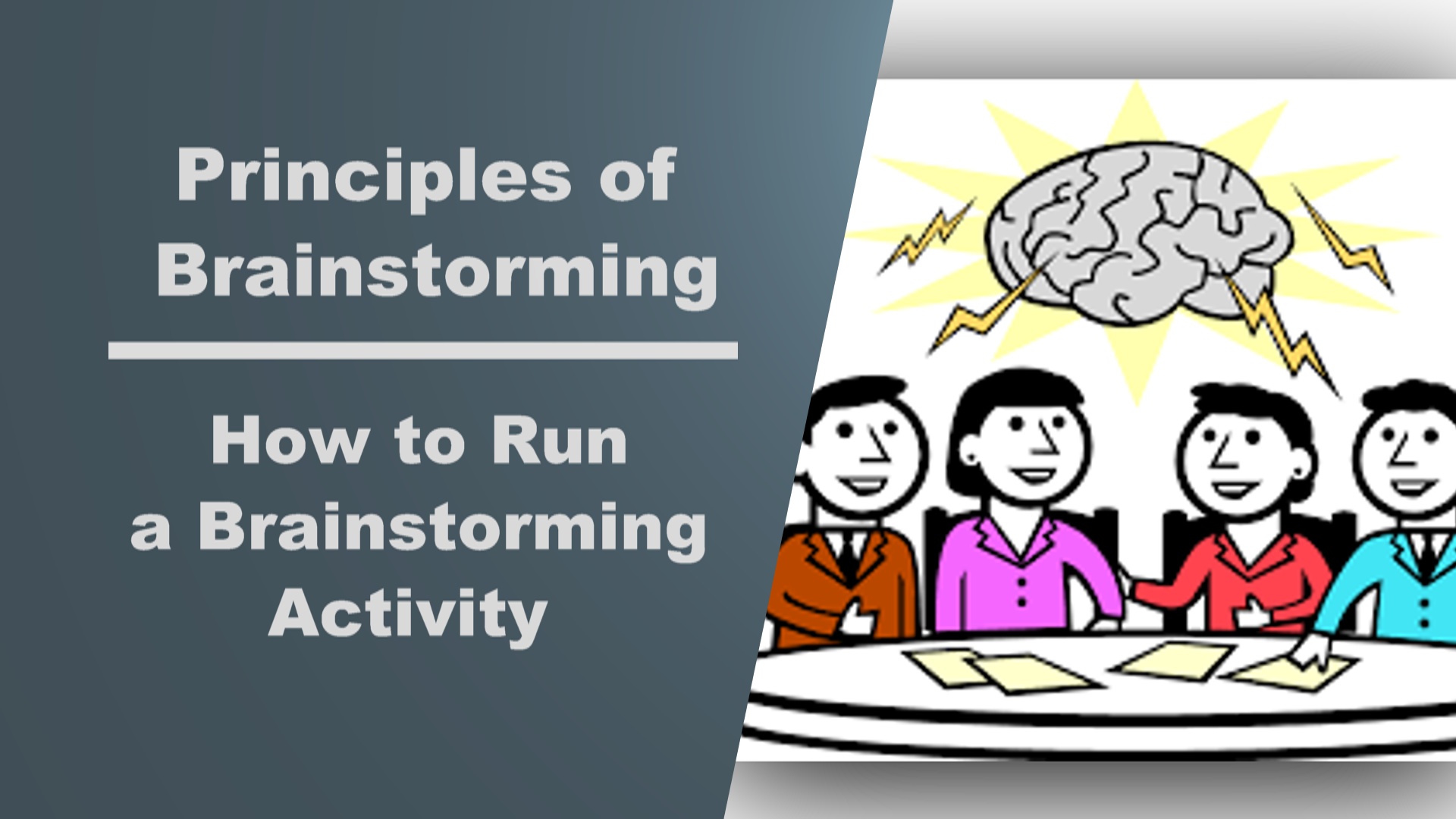How to Conduct a Brainstorming Activity
To effectively conduct a brainstorming session with a group of employees, you must follow specific principles of brainstorming.
Brainstorming is a way to generate lots of ideas to solve a problem, find opportunities for improvement and spark innovation. Brainstorming is not a problem-solving technique, so once the ideas are generated there are other tools and techniques to use to solve the problem or treat the idea.
Definition of brainstorming
A structured approach to thinking, which helps a group of people utilize their collective brain power to generate new ideas.
Principles of brainstorming
I: Generate as many ideas a possible.
Quantity of ideas is favoured over quality. Use the round robin approach by going around the room one person at a time and record their idea on a flip chart. Keep the rounds going until all ideas are exhausted. You can start with a silent brainstorm where individually people take a few minutes to jot down their ideas. Encourage people to keep thinking of ideas during the session.
II: Equal opportunity to participate.
By having each person give one idea at a time as you go around ensures equal participation. If someone has no further ideas, they can say pass but can continue to contribute when it comes to their turn again.
III: Freewheeling is encouraged.
The only bad ideas are those that are withheld. You must encourage everyone to share whatever comes to mind. This is how some of the best ideas get generated. One crazy idea may spark a similar more practical idea in someone else.
IV: No criticism is allowed.
Neither positive or negative criticism is allowed during brainstorming as it could cause people to hold back, especially when you have different levels of leadership in the session.
V: Record all ideas.
Appoint a scribe, someone to write down the ideas on a flip chart. Use paper so the list can be left in view or posted to the wall. Once again, no criticism or editorializing is permitted.
VI: Let the ideas incubate.
Don’t rush into analysis or other problem-solving techniques. Leave the list on display so people can reflect on it and new ideas might be generated or suggestions for combining items.
Remember that brainstorming is an idea generation tool and there are techniques like nominal group technique, force-field analysis and others that need to be used to find solutions and treat the ideas further.
